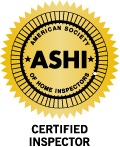Advanced Home InspectionsHome, Radon, and Wood Destroying Insect Inspections for Central Nebraska |
RadonWhat is Radon? Radon is radioactive gas that occurs in nature. It is the natural decay of uranium in the soil. Radon is an invisible, tasteless and odorless radioactive element in the form of gas. It is second leading cause of lung cancer in the United States. The only thing that causes more lung cancer deaths is smoking. One in every 15 homes in the U.S. has elevated radon levels. Elevated levels of radon have been found in all areas of the U.S. The only way to know if your home has radon in it is to test for it. In Nebraska, radon has been found in all 93 counties. Who may test for Radon? Radon testing may be done by the home owner or by a Radon Measurement Specialist. The home owner may buy a test kit and do it themselves. These kits have to be sent into a Nebraska certified laboratory to get analyzed. This will take several days to get the results back. When a test is done with a Radon Measurement Specialist it is done in accordance to the laws the State of Nebraska has issued. All testers must be certified by the State. They are governed by Title 180 chapter 11. No one may do commercial testing if they are not certified and licensed by the Sate of Nebraska. I have passed the National Radon Safety Board test, which is required by the State of Nebraska. I am also licensed and certified by the state, which is required by law. What do your Radon test results mean? Any radon exposure has some risk of causing lung cancer. The lower the radon level in your home, the lower your family’s risk of lung cancer. The amount of radon in the air is measured in pCi/L. The U.S. Congress has set a long term goal that indoor radon levels should be no more than outdoor levels; about 0.4pCi/L of radon normally found in the outside air. EPA recommends fixing your home if the results are 4 pCi/L or above. Everyone should have their house tested for radon. Just because your neighbor has a low level of radon in their house does not mean yours will be low. Likewise if your neighbor’s radon level is high does not mean yours will be high. The only sure way to know is to have a test done in your own home. How are the tests conducted? There a number of ways you can test for radon. There are short term tests, which are used for most real estate transactions. Among the short test there are both passive (no power required to operate) and active tests (power is required to operate the machine). The tests that I perform for real estate transactions are short term active tests. Other types of short term passive tests can last as long as 90 days. A short term test of 4 days or less requires the home to be closed up twelve hours prior to and continuing through the completion of the test. This test is done in the lowest level of the house that is occupied or is able to be occupied. The owner or occupant will need to sign an agreement that this condition will be maintained during the duration of the test. The owner or occupant of house will also have to sign a non-interference contract. Long term tests are tests that last from 90 days to one year. These tests are passive tests that do not require power. A long term test should be conducted to get a yearly average of radon gas in the house. What should I do if the results are 4pCi/L or above? If a short term test is done, and the level is 4pCi/L or above, the EPA recommends that you fix the home and mitigate the home. This will lower the radon level. Mitigation is normally done through a process called soil suction. This begins by making a hole in the floor of the lowest level of the home that is or can be occupied. A pipe is inserted and run out through the roof, or up the outside of the house, to a level of at least 10’ above ground level or 1’ above the roof. An electric motor is installed in the pipe, driving a fan that sucks air from under the concrete floor and exhausts it through the pipe out into the open air. |
